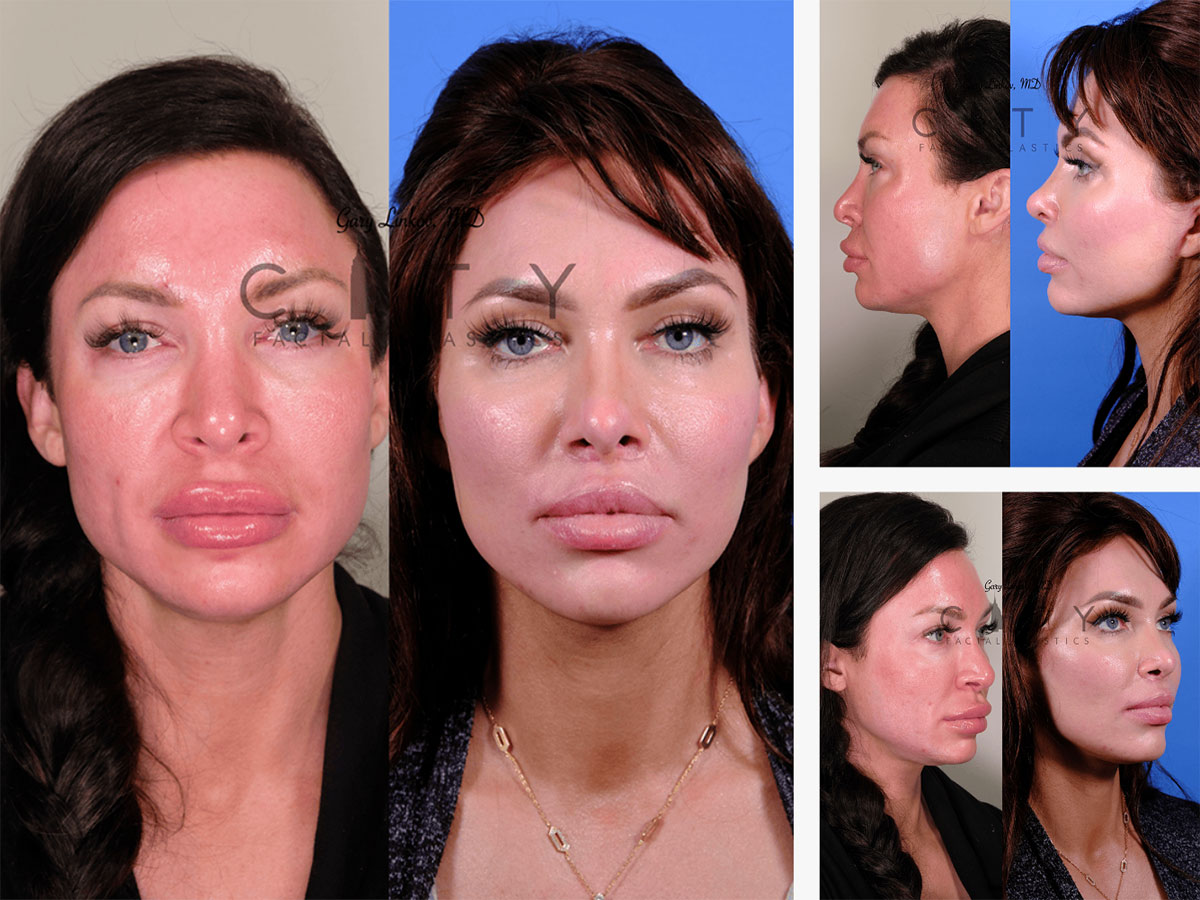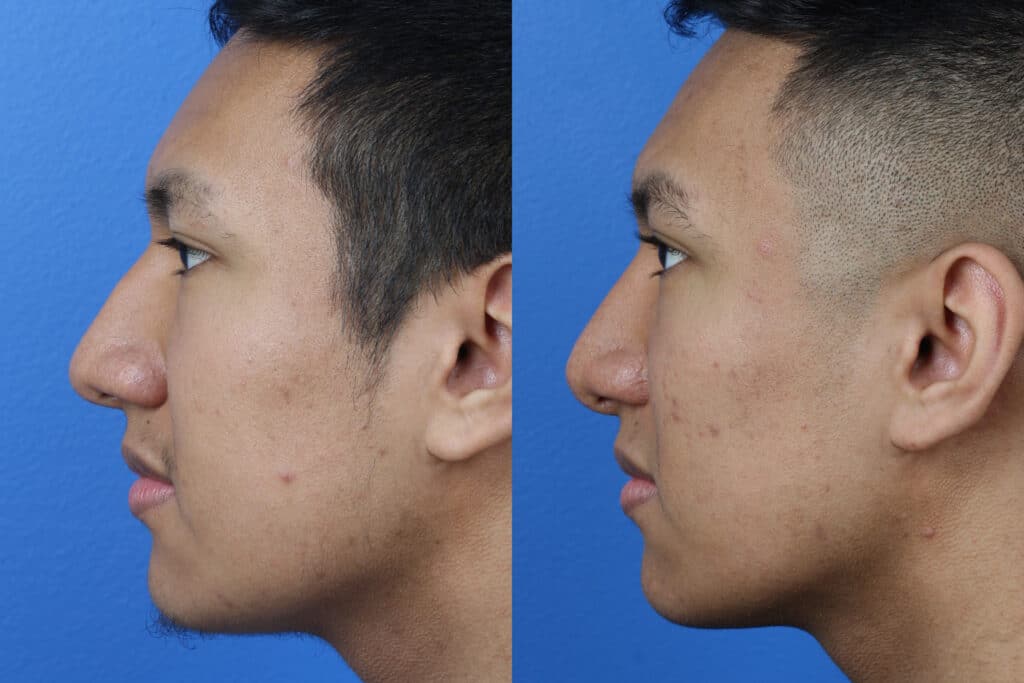Asian nose jobs have become increasingly popular in New York City, offering individuals the opportunity to enhance their facial features while maintaining cultural identity. Whether you're considering a cosmetic procedure or simply curious about the trend, understanding the nuances of Asian rhinoplasty is essential. This guide will provide you with comprehensive insights into the procedure, its benefits, risks, and what to expect when undergoing an Asian nose job in NYC.
Facial aesthetics play a significant role in self-confidence and personal expression. For many Asian individuals, the nose is a central feature that can influence overall facial harmony. With advancements in cosmetic surgery and a growing demand for personalized procedures, NYC has become a hub for high-quality Asian rhinoplasty. This article will delve into the specifics of the procedure, helping you make informed decisions about your journey.
As you explore your options, it's important to work with a qualified surgeon who understands the unique needs of Asian patients. NYC offers a wide range of experienced professionals and state-of-the-art facilities, ensuring that you receive the best possible care. Let's dive deeper into the world of Asian nose jobs and discover why NYC is at the forefront of this transformative trend.
Read also:Unleashing Fun The Ultimate Guide To Hey Hey The Chicken Toy
Table of Contents
- What is an Asian Nose Job?
- Why Choose NYC for Asian Nose Jobs?
- Benefits of an Asian Nose Job
- Risks and Considerations
- Preparing for Your Asian Nose Job
- The Procedure: Step-by-Step Guide
- Recovery Process
- Cost of Asian Nose Jobs in NYC
- How to Find the Right Surgeon
- Patient Testimonials and Success Stories
What is an Asian Nose Job?
An Asian nose job, also known as Asian rhinoplasty, is a specialized cosmetic procedure designed to enhance the appearance of the nose while respecting the unique anatomical characteristics of Asian individuals. Unlike traditional rhinoplasty, this procedure focuses on creating a balanced and harmonious look that complements Asian facial features.
Common goals of an Asian nose job include:
- Increasing nasal bridge height
- Refining the nasal tip
- Improving nostril shape and size
- Enhancing overall facial symmetry
Surgeons performing Asian rhinoplasty must have a deep understanding of the structural differences in Asian noses, such as thinner cartilage and flatter nasal bridges. This expertise ensures natural-looking results that align with each patient's aesthetic preferences.
Why Asian Rhinoplasty is Unique
Asian rhinoplasty differs from other forms of nose surgery due to the distinct anatomical features of Asian patients. These differences require specialized techniques and a personalized approach to achieve optimal results. Experienced surgeons in NYC are well-versed in these nuances, making the city an ideal destination for those seeking this procedure.
Why Choose NYC for Asian Nose Jobs?
New York City has established itself as a premier destination for cosmetic surgery, including Asian rhinoplasty. The city boasts a diverse population, world-class medical facilities, and a wealth of highly skilled surgeons who specialize in ethnic cosmetic procedures.
Key reasons to choose NYC for your Asian nose job include:
Read also:Gabriels Net Worth A Comprehensive Analysis Of His Wealth And Achievements
- Access to leading-edge technology and techniques
- Surgeons with extensive experience in ethnic rhinoplasty
- A supportive and culturally sensitive environment
- Convenient access to follow-up care and consultations
NYC's reputation for excellence in cosmetic surgery makes it a top choice for individuals seeking a safe and effective Asian nose job. With numerous options available, you can find a surgeon who aligns with your goals and expectations.
NYC's Role in Advancing Cosmetic Surgery
The city's commitment to innovation and patient care has positioned it as a leader in the field of cosmetic surgery. Surgeons in NYC regularly attend conferences, participate in research studies, and collaborate with peers to stay at the forefront of industry advancements. This dedication ensures that patients receive the highest standard of care when undergoing procedures like Asian rhinoplasty.
Benefits of an Asian Nose Job
Undergoing an Asian nose job can offer numerous benefits, both aesthetic and psychological. By enhancing the appearance of your nose, you can achieve greater facial harmony and boost your self-confidence. Here are some of the key advantages of this procedure:
- Improved facial symmetry
- Enhanced self-esteem
- Customized results tailored to individual preferences
- Long-lasting improvements with proper care
Many patients report feeling more comfortable in social situations and more confident in their professional lives after undergoing an Asian nose job. These positive changes can have a profound impact on overall well-being and quality of life.
Psychological Impact of Nose Surgery
The psychological benefits of Asian rhinoplasty extend beyond physical appearance. Patients often experience increased self-assurance and a greater sense of identity. This emotional transformation can lead to improved relationships, career opportunities, and personal fulfillment.
Risks and Considerations
While Asian nose jobs offer numerous benefits, it's important to be aware of potential risks and considerations. As with any surgical procedure, complications can arise, though they are rare when performed by a qualified surgeon. Common risks associated with Asian rhinoplasty include:
- Infection
- Bleeding
- Scarring
- Asymmetry
To minimize these risks, it's crucial to choose a reputable surgeon with extensive experience in Asian rhinoplasty. Additionally, following pre- and post-operative care instructions can help ensure a smooth recovery process.
Managing Expectations
Setting realistic expectations is essential when considering an Asian nose job. While the procedure can significantly enhance your appearance, it's important to understand its limitations. Open communication with your surgeon about your goals and desired outcomes can help ensure satisfaction with the final results.
Preparing for Your Asian Nose Job
Proper preparation is key to a successful Asian nose job. Before undergoing the procedure, you should:
- Consult with a qualified surgeon to discuss your goals and expectations
- Undergo a thorough medical evaluation to ensure you're a suitable candidate
- Follow pre-operative instructions, such as avoiding certain medications and supplements
- Arrange for transportation and post-operative care
Your surgeon will provide detailed guidance on how to prepare for your Asian nose job, ensuring that you're fully informed and ready for the procedure.
What to Expect During Your Consultation
During your initial consultation, your surgeon will assess your nasal anatomy, discuss your aesthetic goals, and outline the procedure's potential outcomes. This meeting is an opportunity to ask questions, address concerns, and establish a rapport with your surgeon. A thorough consultation lays the foundation for a successful and satisfying experience.
The Procedure: Step-by-Step Guide
An Asian nose job typically involves several key steps, each designed to achieve the desired results. Here's a breakdown of the procedure:
- Anesthesia: You'll be administered either general anesthesia or intravenous sedation to ensure comfort during the procedure.
- Incisions: Your surgeon will make precise incisions inside the nostrils or at the base of the nose, depending on the specific techniques required.
- Reshaping: Cartilage and bone may be reshaped or augmented using implants or grafts to achieve the desired nasal structure.
- Closure: Incisions will be carefully closed with sutures, ensuring minimal scarring.
- Recovery: A splint or cast may be applied to support the nose during the initial healing period.
Each step is performed with precision and care, ensuring that your Asian nose job achieves the best possible results.
Techniques Used in Asian Rhinoplasty
Surgeons employ various techniques in Asian rhinoplasty, such as cartilage grafting, implant placement, and tip refinement. These methods are tailored to each patient's unique needs, ensuring natural and harmonious results. Staying informed about these techniques can help you better understand the procedure and its potential outcomes.
Recovery Process
Recovery from an Asian nose job typically involves a gradual healing process. Most patients experience mild discomfort, swelling, and bruising in the days following the procedure. These symptoms usually subside within one to two weeks, though full recovery may take several months.
To promote optimal healing, follow your surgeon's post-operative care instructions, which may include:
- Avoiding strenuous activities
- Protecting your nose from trauma
- Using prescribed medications as directed
- Attending follow-up appointments
By adhering to these guidelines, you can ensure a smooth recovery and achieve the best possible results from your Asian nose job.
Managing Post-Operative Care
Proper post-operative care is crucial to minimizing complications and maximizing satisfaction with your results. Your surgeon will provide detailed instructions on how to care for your nose during the recovery period, ensuring that you heal safely and effectively.
Cost of Asian Nose Jobs in NYC
The cost of an Asian nose job in NYC varies depending on factors such as surgeon experience, facility fees, and the complexity of the procedure. On average, patients can expect to pay between $8,000 and $15,000 for this surgery. Insurance typically does not cover cosmetic procedures, so it's important to budget accordingly.
Some surgeons offer financing options to make the procedure more accessible. Be sure to discuss payment plans and any additional costs during your consultation to avoid surprises.
Factors Influencing Cost
Several factors can influence the cost of an Asian nose job, including:
- Surgeon's expertise and reputation
- Facility and anesthesia fees
- Complexity of the procedure
- Geographical location
Understanding these factors can help you make informed decisions about your procedure and its associated costs.
How to Find the Right Surgeon
Selecting the right surgeon is one of the most important steps in your Asian nose job journey. To find a qualified professional, consider the following:
- Look for board-certified surgeons with extensive experience in Asian rhinoplasty
- Review before-and-after photos to assess their work
- Read patient reviews and testimonials
- Schedule consultations to discuss your goals and expectations
Choosing a surgeon who understands your cultural background and aesthetic preferences can lead to more satisfying results. Take the time to research and interview potential candidates to ensure you find the best fit for your needs.
Questions to Ask During Your Consultation
During your consultation, be sure to ask questions about the surgeon's qualifications, experience, and approach to Asian rhinoplasty. Key questions to consider include:
- How many Asian nose jobs have you performed?
- What techniques do you use to achieve natural-looking results?
- Can you provide references or testimonials from previous patients?
Thoroughly vetting potential surgeons can help you make a confident decision about your procedure.
Patient Testimonials and Success Stories
Hearing from others who have undergone Asian nose jobs can provide valuable insights into the procedure's benefits and outcomes. Many patients in NYC have shared their positive experiences, highlighting the skill and dedication of their surgeons.
Success stories often emphasize increased confidence, improved facial harmony, and long-lasting results. These testimonials serve as a testament to the transformative power of Asian rhinoplasty and the exceptional care provided by NYC surgeons.
Real-Life Transformations
Real-life transformations achieved through Asian nose jobs in NYC demonstrate the procedure's potential to enhance both appearance and self-esteem. Patients frequently report feeling more comfortable in their own skin and more confident in their interactions with others. These stories inspire hope and encourage others to pursue their aesthetic goals.
Conclusion


